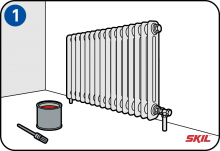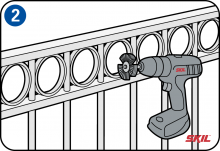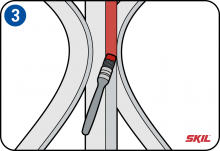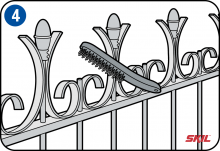-
Indoors
You can quite easily change the color of a heating radiator to match the new color of your room (see also the step-by-step instructions for making a radiator housing). Sand worn or damaged places, remove grease and apply a coat of primer. Then make the whole radiator grease-free. Of course the radiator has to be cold before you can paint it. Use special radiator paint, which is available in a choice of matching or complementary colors. Radiator paint is made specially for use on radiators and heating pipes. This kind of paint is resistant to heat, discoloring and ageing.
-
Outdoors
Metal products for outdoor use such as balcony rains and garden fences, pergolas, garage doors etc. are exposed to the weather. So it’s not surprising that sooner or later the metal will corrode or rust. That’s why metal needs regular maintenance and may even need to be renewed from time to time.
Removing rust
Rust and oxidation are usually found along the welds. You can easily remove it with a wire brush or using a power drill with a wire brush attachment. An alternative on flat surfaces liker fences is the paint stripper with a cleaning disk. Use a spraying mask, safety glasses and working gloves. Remove all remaining rust, otherwise it’s sure to come back again. Rusting usually starts at the edges and welded components, so you need to give these extra attention, especially if they are in hard-to-reach places. -
Protection from rust
To prevent rust, use a rust-resistant primer or other special metal treatment. It’s best to do this with a small, round brush. Do this very carefully, using small quantities to prevent runs. The final paint coat will them be more durable.
-
Using metal paints outside
When the primer has dried completely, you can apply the final paint coat. Use metal paint, because this offers good protection against corrosion for moderately loaded surfaces. Avoid painting in strong sunlight: this means the paint will dry too quickly, which can cause cracks in the top layer. Start in the corners and at the edges, using a round brush which you only dip into the paint by 1 cm. Make sure you don’t apply the paint coat too thickly – it’s better to apply 2 or more coats. You can usually paint over these after around 16 hours. Check regularly for rust, and remove it immediately with a wire brush and touch it up when necessary – that will extend the maintenance intervals.




